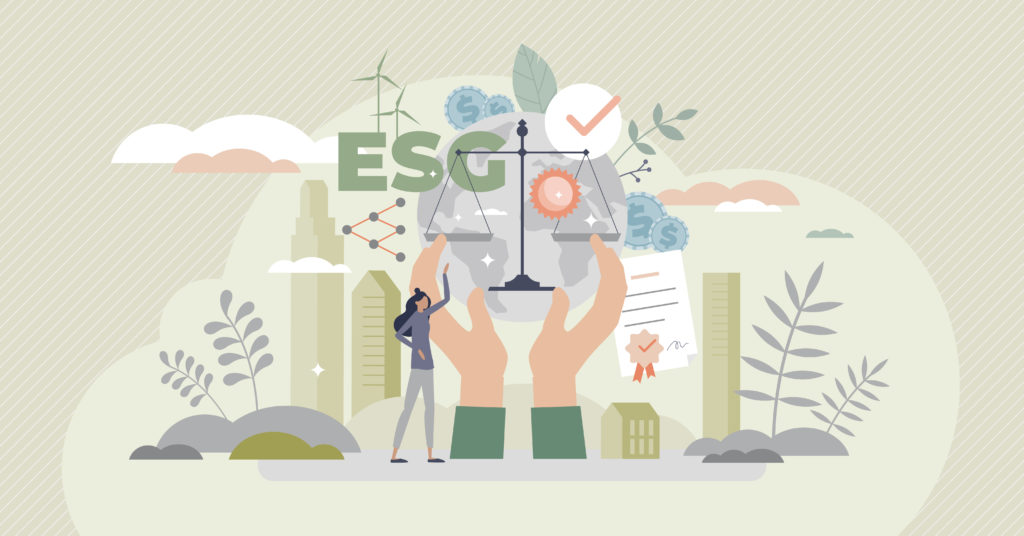June 28, 2021
What Business Leaders Should Know About ESG and Global Supply Chains

By Alan Cuddihy, VP of Sustainability at PCH International
Investors are always looking for ways to mitigate risk and generate better ROI — and a rapidly increasing number of investors believe that by incorporating non-financial, Environmental, Social, and Governance (ESG) data into investment analysis, they can choose better funds that will outperform the market. Global ESG assets under management increased from $6 billion in 2015 to an astounding $150 billion in 2020.
But it isn’t just investors that are betting big on ESG. Deloitte recently released a report showing that consumers increasingly are embracing companies who are willing to address social and environmental problems. Brands across industries are working (often with considerable marketing attention) to design with these concerns and customers in mind. For example, Adidas and Parley for the Oceans’ ongoing partnership offers dozens of compelling and innovative products made from recaptured waste plastic.
Environmentally and socially conscious design is one way to approach ESG — but understanding and improving ESG performance in a demonstrative way demands much more than just design. According to McKinsey, a typical consumer company’s supply chain accounts for more than 80 percent of its greenhouse-gas emissions and more than 90 percent of its impact on air, land, water, biodiversity, and geological resources — key ESG considerations.
Legacy supply chains (that typically serve forecast demand, large volume orders, manufacturer capacity, intermediary distribution centers, warehousing, and third-party logistics companies) can accurately be described as black boxes when it comes to tracking ESG data. They have multiple siloed actors (each with their own incentives), which hinders visibility and insight into ESG performance data and limits control over ESG factors. As a result, brands have much greater difficulty improving their ESG impact.
There’s a better way.
In the wake of COVID-19’s devastating effect on traditional brick and mortar retail channels, we have helped our customers pivot toward the direct-to-consumer (D2C) supply chain model. D2C supply chains come with a host of benefits that most business leaders immediately understand — such as the ability to manage customer relationships directly and the capability to produce goods based on real-time consumer demand (versus retail forecasts).
D2C supply chains also drive ESG performance, providing companies with a holistic, accurate understanding of the ESG impact of their product — from the concept phase to customer delivery. With a unified, end-to-end view of the entire supply chain, companies can easily track how product design and supply chain architecture decisions made early in the development process affect environmental considerations (climate change, resources use, pollution and waste, emissions) and social factors (worker health and safety, wellbeing) throughout the supply network. And D2C models allow companies to have the direct stakeholder relationships, oversight and control they need to recognize where they can improve ESG and implement improvements quickly and efficiently.
Truly sustainable D2C infrastructures can only be realized when products can be built based on consumer-led demand (as opposed to capacity-led supply). D2C eliminates inventories that lead to excess production, shipping, waste and disposal. We need to ensure that D2C products can be moved and distributed from one point to another without negative environmental impact. As a sign of things to come, DB Schenker and Lufthansa Cargo launched the world’s first regular carbon neutral cargo flight between Europe and China in April. As more companies begin to understand better the impacts of their supply chains, expect other freight companies to follow suit.
Since signing the UN Global Compact in 2012, PCH has worked to build better, more sustainable supply chains, as we strongly believe that companies that are willing to take the steps to solve complex ESG issues are the ones who will excel in the medium and long term. Today we work with stakeholders to develop products that deliver on design, user experience, speed, cost and quality — and also can be verified as sustainable.
My message to ESG-minded brands has been reinforced by the events of the past 16 months: if transparency, visibility and accuracy are essential to your success (and they most certainly are), start with your supply chain. Your efforts will create more sustainable outcomes for your business.